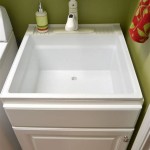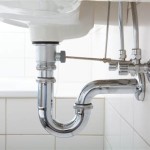Sink and Source in Programmable Logic Controllers (PLCs)
Understanding sinking and sourcing input/output (I/O) modules is crucial for effectively interfacing Programmable Logic Controllers (PLCs) with field devices such as sensors, actuators, and indicators. The terms "sink" and "source" describe the direction of current flow in a DC circuit related to the PLC's I/O modules. Choosing the correct module type and wiring configuration is essential for proper system functionality and safety.
Electrical current flows from a point of higher potential (positive) to a point of lower potential (negative). A sourcing device provides current, while a sinking device accepts or consumes current. When applying these concepts to PLC I/O, it's essential to consider the I/O module's perspective. Specifically, we're concerned with how the module interacts with the field device connected to it.
Confusing sink and source configurations can lead to improper operation, damage to the PLC or field devices, and even hazardous situations. This article will comprehensively explore the concepts of sinking and sourcing, providing a clear understanding of how to select and wire these modules appropriately. It will cover common configurations, wiring diagrams, and considerations for different types of field devices.
The concepts of sinking and sourcing are particularly important in DC-based I/O systems, which are prevalent in industrial automation due to their reliability, efficiency, and ease of implementation. AC I/O systems exist but are less common due to their generally lower speed and the inherent challenges with switching AC signals.
Understanding Sinking I/O Modules
A sinking input module provides a path to ground (0V) for the current coming from the field device. In essence, when the input is active, the module "sinks" the current. This means the field device must "source" the current, providing the positive voltage to the input terminal of the PLC. The internal circuitry of a sinking input module typically includes a pull-up resistor connected to the positive supply voltage. When the input is not active, the pull-up resistor pulls the input terminal high. When the field device provides a signal (positive voltage), it overcomes the pull-up resistor, and current flows through the input circuit to ground within the module, signaling an active input.
Consider a proximity sensor as an example. For a sinking input module, the proximity sensor would be a sourcing type. When the sensor detects a target, it outputs a positive voltage. This voltage is connected to the input terminal of the sinking PLC module. The module then completes the circuit by providing a path to ground, allowing current to flow and registering the input.
For sinking output modules, the module provides a path to ground when the output is activated. The field device connected to the output (e.g., a solenoid valve) must be powered by a separate external power supply. When the PLC activates the output, the sinking output module completes the circuit, allowing current to flow from the positive side of the external power supply, through the solenoid valve, and then through the sinking output terminal to ground within the module.
In summary, a sinking module effectively acts as a switch to ground. For inputs, the field device provides the positive voltage; for outputs, the module completes the circuit to ground, allowing current to flow through the connected load powered by an external source.
Wiring a sinking module incorrectly can lead to several problems. If a sourcing device is inadvertently connected to a sourcing PLC input module, it can create a short circuit, potentially damaging the input module and the sourcing device. Similarly, if the incorrect external voltage is applied to a sinking output module, it can damage the module or the field device.
Understanding Sourcing I/O Modules
A sourcing input module provides a positive voltage to the input terminal when the input is active. In this configuration, the module "sources" the current. The field device, on the other hand, must "sink" the current, providing a path to ground (0V) when the sensor is activated. Internally, a sourcing input module typically contains a pull-down resistor connected to ground (0V). When the input is not active, the pull-down resistor keeps the input terminal at ground. When the field device provides a path to ground, it effectively pulls the input terminal low, signaling an active input.
Again, consider a proximity sensor. When using a sourcing input module, the proximity sensor would be a sinking type. When the sensor detects a target, it provides a path to ground. This ground connection is connected to the input terminal of the sourcing PLC module. The module then provides the positive voltage internally, allowing current to flow from the module, through the sensor's connection to ground, and registering the input.
For sourcing output modules, the module provides a positive voltage when the output is activated. Similar to sinking outputs, the field device connected to the output requires a separate external power supply. When the PLC activates the output, the sourcing output module provides the positive voltage. Current flows from the sourcing output terminal, through the field device, and then to the negative side (ground) of the external power supply. Thus, the external power supply completes the circuit.
In simpler terms, a sourcing module acts as a switch to the positive voltage. For inputs, the module provides the positive voltage; for outputs, the module provides the positive voltage, and the connected load completes the circuit to ground through an external power supply.
Incorrect wiring with sourcing modules can also lead to damage. Connecting a sinking device to a sinking PLC input module may not provide enough current to register the input correctly. Applying the wrong voltage or polarity to a sourcing output module can damage the module or the field device.
Key Differences and Practical Considerations
One of the major differences between sinking and sourcing configurations lies in their susceptibility to short circuits. In a sourcing system, a short circuit to ground will typically activate the input or output. In a sinking system, a short circuit to the positive voltage supply will activate the input or output. Environment plays a role here. In environments where short circuits to ground are more likely, a sinking system might be preferred, as a short circuit would de-energize the output, potentially preventing unintended machine operation.
Another practical consideration is the wiring. Sinking systems are often preferred when wiring to negative-grounded systems, which are common in automotive and mobile equipment. Sourcing systems are frequently favored in positive-grounded systems, like many industrial panels. However, wiring conventions are also often a matter of established company standards and technician familiarity.
When selecting I/O modules, it's essential to consider the specifications of the field devices being used. The sensor or actuator's datasheet will usually indicate whether it is a sinking or sourcing device. Matching the sensor type to the appropriate PLC module type is crucial. If the sensor is sourcing, a sinking PLC input module should be used, and vice versa. For outputs, verify voltage and current ratings. Most manufacturers clearly label their I/O modules and provide wiring diagrams to avoid confusion.
PLC manufacturers often offer both sinking and sourcing modules within the same product line, providing flexibility in system design. Some modules even offer configurable I/O, allowing the user to select whether the module operates as a sinking or sourcing type via a jumper or software setting. This flexibility can simplify inventory management and reduce the risk of using the wrong module type.
In summary, understanding the nuances of sinking and sourcing I/O modules is fundamental for building robust and reliable PLC-based automation systems. Careful consideration of field device specifications, wiring practices, and environmental factors will ensure proper system operation and minimize the risk of damage or unexpected behavior.

Sinking And Sourcing For The Plc Explained

Can You Match Sourcing Sinking Outputs To Parallel Plcs

What Is Plc Sink And Source I O Basics Engineers Community

Automation Talk All About Understanding Difference Between Source Sink In Plc S

Source Sink Concept In Plc What Is Sourcing Sinking म और कन क शन

Control Basics The Difference Between Sink And Source Logic

Animation What Is Sinking And Sourcing In Plc Source Sink Pnp Npn With Practical

Sink Vs Source In Plcs What Is The Difference

Sinking Vs Sourcing In Plcs Do Supply Blog

Confused By Pnp And Npn Wiring In The Samba Manual Vision Plc Hmi Controllers Visilogic Unitronics Support Forum Programmable All One







